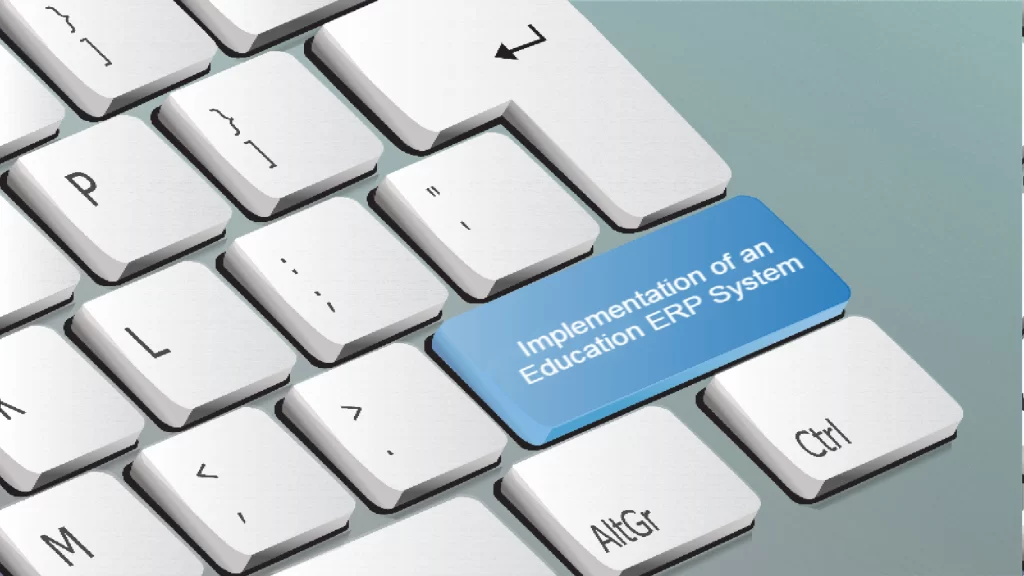INTRODUCTION
The implementation of the Education ERP system at LSBF University resulted in significant improvements in administrative efficiency, communication, and decision-making. The university was able to automate key processes, centralize data, and provide better services to students and faculty. As a result, the institution saw increased operational efficiency, higher student satisfaction, and improved academic outcomes.
This case study highlights the transformative potential of Education ERP systems in managing complex academic operations and enhancing the overall experience for all stakeholders.
Implementation of an Education ERP System
The institution’s management faced challenges in efficiently handling student data, attendance, exam schedules, academic records, and financial transactions. Additionally, communication between faculty, administration, and students was fragmented and inefficient.
To resolve these issues, the university decided to implement an Education Enterprise Resource Planning (ERP) system that would streamline administrative processes, improve communication, and enhance overall management.
Objectives:
The primary objectives for implementing the ERP system were:
- Centralization of student, faculty, and administrative data.
- Automation of routine administrative tasks such as attendance tracking, grading, and fee payments.
- Improved Communication among students, faculty, and administration.
- Data-Driven Insights for decision-making by providing real-time reporting and analytics.
- Enhanced User Experience for students and faculty, allowing them to access information easily and efficiently.
Challenges Faced Before ERP Implementation:
- Manual Processes: Much of the university’s operations were handled manually, leading to inefficiency, human error, and slow processing of data.
- Disparate Systems: There were various isolated systems for managing student admissions, course registration, payroll, and grading, which did not communicate with each other.
- Lack of Real-Time Data: The institution had difficulty tracking student progress, attendance, and financial records in real-time.
- Poor Communication: Students, faculty, and administration had limited means to communicate efficiently, leading to delays and misunderstandings.
ERP Solution:
The system was designed to manage the following key areas:
- Student Information System (SIS):
- Centralized student records including personal information, academic history, and course registrations.
- Real-time tracking of attendance, grades, and performance.
- Online access for students to view their grades, schedules, and academic reports.
- Academic Management:
- Automated timetable creation and exam scheduling.
- Integrated grading system to evaluate and store student performance data.
- Online course registration system for students to select and register for courses.
- Finance and Accounting:
- Automated fee collection and invoicing.
- Real-time tracking of financial transactions, including tuition fees, hostel charges, and other payments.
- Integration with the university’s accounting system for budgeting and financial reporting.
- Reporting and Analytics:
- Dashboards for real-time insights into student performance, financial status, and other operational data.
- Customizable reports to help the administration make informed decisions regarding resource allocation, student retention, and overall academic performance.
Results:
- Efficiency Gains:
- The automation of routine tasks such as attendance tracking, grading, and fee collection reduced administrative workload and processing time.
- Faculty and staff were able to focus more on teaching and student support rather than manual record-keeping.
- Improved Communication:
- The integrated messaging and notification system facilitated seamless communication between students, faculty, and administration.
- Students were able to access their schedules, grades, and academic progress from any device, reducing dependency on in-person interactions.
- Data-Driven Decision Making:
- Real-time analytics and customizable reports allowed the administration to monitor and track key metrics, such as student attendance, academic performance, and financial health.
- The administration could quickly identify and address potential issues, such as underperforming students or overdue fee payments.
- Increased Student Satisfaction:
- Students reported higher satisfaction levels due to easier access to information, simplified course registration, and better communication with faculty and administration.
- The self-service portal empowered students to take charge of their academic journey, reducing dependency on administrative staff.
- Cost Savings:
- The reduction in administrative overhead and manual processes resulted in cost savings for the institution.
- The streamlined financial processes also improved cash flow management and minimized errors in fee collection.
Written by

Athira Suresh B
QA lead





